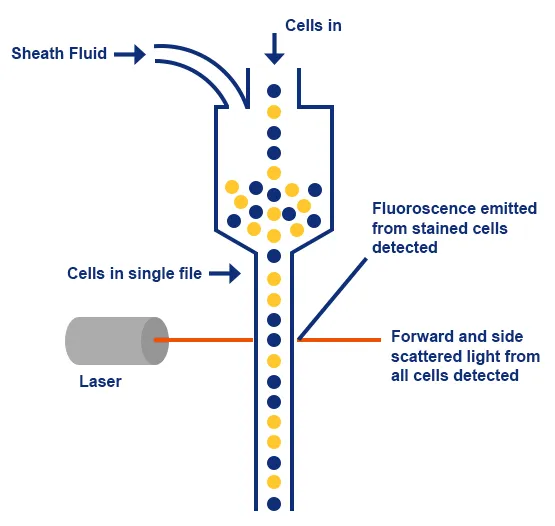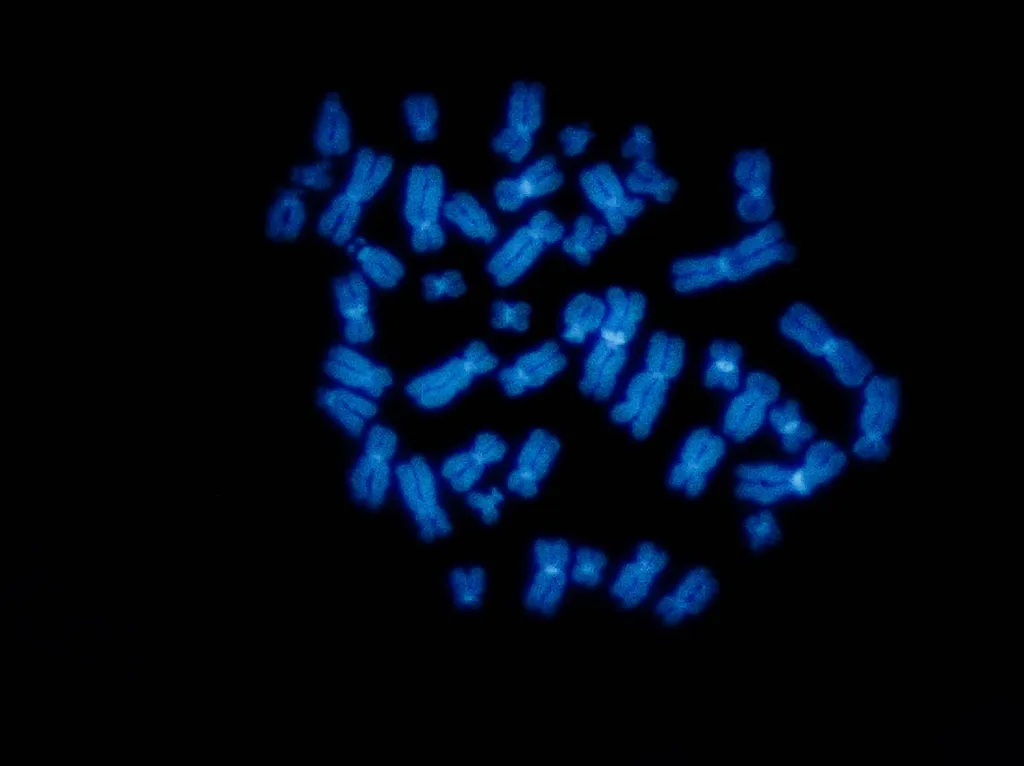How is AML Diagnosed?
Unlike other cancers, there is not yet a preliminary test to screen for AML. Generally, AML progresses too quickly to catch it before it starts advancing. The best thing to do is to promptly report any noticeable signs or symptoms immediately to your primary care doctor. See our Signs and Symptoms page for more information on what to look out for.
Diagnosing acute myeloid leukemia (AML) involves a detailed series of tests designed to assess the blood, bone marrow, and genetic factors. Early detection of AML can be challenging because the disease progresses rapidly. However, if you experience symptoms such as pale skin, fatigue, bruising, or shortness of breath, it’s crucial to consult a healthcare provider immediately. Here's an in-depth look at the diagnostic process for AML, which may involve a combination of physical exams, lab tests, imaging, and advanced genetic analysis.
Step 1: Physical Examination and Initial Blood Tests
The diagnostic process begins with a physical examination, where a doctor looks for signs of AML, such as abnormal bleeding or signs of anemia. If AML is suspected, blood tests are ordered to assess the number and condition of blood cells. Common blood tests include:
- Complete Blood Count (CBC): This test evaluates the levels of red blood cells, white blood cells, and platelets in the blood. A low count of these cells may indicate leukemia.
- Complete Metabolic Panel (CMP): The CMP measures electrolytes and markers to assess kidney and liver function. Elevated levels of certain markers can suggest issues with organ function, which may be related to leukemia progression.
Step 2: Bone Marrow Examination
A critical component of AML diagnosis is examining bone marrow, as leukemia originates in the marrow. This is done through a bone marrow biopsy and aspiration, which involves extracting a sample of bone marrow for testing. The procedure involves numbing the pelvic bone area and using a needle to remove a small amount of marrow. The bone marrow is then analyzed to check for leukemia cells.
This is the most invasive of the diagnostic tests but the information gathered is extremely valuable.
Most patients go home immediately after the procedure. If you prefer, the procedure can be done under light anesthesia called conscious sedation. The sedation makes you tired for an hour or two but doesn’t knock you out. Many patients prefer to go without any pain medication. There is no “wrong” decision.
A doctor will use a microscope to look at the bone marrow tissue to evaluate the appearance, size, and shape of the cells, how the cells are arranged, and to determine if there are leukemia cells in the bone marrow and, if so, how many.
Fine needle aspiration (FNA) biopsy
If an imaging study shows a potential tumor or other abnormality, an additional aspiration during the bone marrow biopsy can be performed. A fine-needle aspiration (FNA) uses a very thin needle and an ordinary syringe to withdraw a small amount of tissue from a tumor or lymph node. If the tumor is deep inside the body, the needle can be guided while it is viewed on a computed tomography (CT) scan. The main advantage of FNA is that it does not require surgery. The disadvantage is that in some cases the thin needle cannot remove enough tissue for a definite diagnosis. FNA can be useful in diagnosing cancers that have spread to nodes from other organs.
Core needle biopsy
This test is similar to a fine needle aspiration (FNA) but a larger needle is used and a larger tissue sample is removed.
Step 3: Molecular and Genetic Testing
In recent years, advanced genetic tests have become essential for diagnosing and treating AML. These tests provide more detailed information about the leukemia subtype and can guide more personalized treatment plans.
- Next-Generation Sequencing (NGS): NGS analyzes the genetic material from bone marrow samples to identify gene mutations, deletions, or overexpression, providing insights into the molecular profile of the leukemia. This test can analyze thousands of genes at once and can identify specific gene mutations that help determine treatment options.
- Gene Expression Profiling: This test offers a deeper understanding of gene activity in leukemia cells, identifying which genes are over or under-expressed. This molecular data is crucial for tailoring AML treatment strategies.
Immunohistochemistry
In this test, a part of the bone marrow biopsy sample is treated with special antibodies (man-made versions of immune system proteins) that attach only to specific molecules on the cell surface. These antibodies cause color changes, which can be seen under a microscope. This test may be helpful in differentiating between cell types and in finding leukemia cells.
Flow cytometry
Like immunohistochemistry, this test looks for certain substances on the outside surface of cells that help identify what types of cells they are. This test is able to look at many more cells than immunohistochemistry.
For this test, a sample of cells is treated with special antibodies that stick to the cells only if certain substances are present on their surfaces. The cells are then passed in front of a laser beam. If the cells now have antibodies attached to them, the laser will cause them to give off light, which can be measured and analyzed by a computer. Groups of cells can be separated and counted by these methods.

This is the most commonly used test for immunophenotyping, the process of classifying cells according to the substances (antigens) on their surfaces. Different cells and cell types have different antigens on their surface. These antigens may also change as each cell matures.
Flow cytometry can help determine if there are abnormal cells in the bone marrow and if they are leukemia cells, AML cells, lymphoma cells, some other cancer, or a non-cancerous disease.
Cytogenetics
This technique allows doctors to evaluate the chromosomes (long strands of DNA) in normal bone marrow cells and leukemia cells. The cells are examined under a microscope to see if the chromosomes have any abnormalities such as a translocation. Translocations occur when part of one chromosome has broken off and becomes attached to another chromosome. This can happen in some cases of AML. Some leukemia cells may have too many chromosomes, too few chromosomes, or other chromosome abnormalities. Finding these changes can sometimes help predict prognosis and determine treatment options.
Cytogenetic testing usually takes about 1 to 2 weeks because the cells must grow in lab dishes for a couple of weeks before their chromosomes are ready to be viewed under the microscope.
Fluorescent in situ hybridization (FISH analysis)
Fluorescent in situ hybridization (FISH) is similar to cytogenetic testing. It uses special fluorescent dyes that only attach to specific parts of chromosomes. FISH can find most chromosome changes (such as translocations) that can be seen under a microscope in standard cytogenetic tests, as well as some changes too small to be seen with usual cytogenetic testing.

FISH can be used to look for specific changes in chromosomes. It can be used on regular blood or bone marrow samples. It is very accurate and can usually provide results within a couple of days, which is why this test is now used in many medical centers.
Step 4: Imaging Tests
While bone marrow testing is critical for diagnosing AML, imaging tests can help determine the extent of disease spread and check for complications. Common imaging tests include:
- Computed Tomography (CT) Scan: A CT scan produces detailed cross-sectional images of the body, helping identify enlarged lymph nodes, swollen spleen, or tumors. Contrast materials may be used to enhance visibility during the scan.
- Magnetic Resonance Imaging (MRI): MRI uses strong magnets and radio waves to create detailed images, often used to check if AML has spread to the brain or spinal cord. Though MRI can be more uncomfortable than CT scans, it provides highly detailed images.
- Positron Emission Tomography (PET) Scan: PET scans detect cancer cells by injecting radioactive glucose into the bloodstream. Since cancer cells consume glucose at higher rates than normal cells, areas of the body with higher glucose activity may indicate the presence of cancer.
The Importance of Accurate Diagnosis and Prognosis
Diagnosing AML is a complex process, and it’s crucial to work with a team of specialists. Your doctor may order several tests to confirm the presence of leukemia and determine the specific subtype, which can influence treatment decisions. The findings from blood tests, bone marrow analysis, and genetic testing can provide critical information for determining the best course of action. These tests help predict the prognosis and guide therapies, ensuring patients receive the most effective, personalized treatment options.
Seeking Expert Care
If you or a loved one is undergoing AML diagnosis, it’s important to work closely with a specialized AML doctor. Not all doctors have the same level of experience with this rare form of leukemia, so seeking a hematologist or oncologist specializing in AML can make a significant difference. For assistance in finding an AML specialist, consider using resources like HealthTree's AML Specialist Directory to connect with experienced professionals in your area.
In conclusion, diagnosing AML requires a combination of blood tests, bone marrow analysis, genetic testing, and imaging studies. While the process can be intensive, it provides critical insights into the disease, helping to develop a tailored treatment plan. Early detection and accurate diagnosis remain essential to improving outcomes for patients with AML. If you notice symptoms or suspect leukemia, seek medical attention promptly to ensure timely diagnosis and intervention.
Stay Informed with AML News
Explore the latest AML news, including patient stories, treatment breakthroughs, and expert insights so you can make confident, informed decisions.
Unlike other cancers, there is not yet a preliminary test to screen for AML. Generally, AML progresses too quickly to catch it before it starts advancing. The best thing to do is to promptly report any noticeable signs or symptoms immediately to your primary care doctor. See our Signs and Symptoms page for more information on what to look out for.
Diagnosing acute myeloid leukemia (AML) involves a detailed series of tests designed to assess the blood, bone marrow, and genetic factors. Early detection of AML can be challenging because the disease progresses rapidly. However, if you experience symptoms such as pale skin, fatigue, bruising, or shortness of breath, it’s crucial to consult a healthcare provider immediately. Here's an in-depth look at the diagnostic process for AML, which may involve a combination of physical exams, lab tests, imaging, and advanced genetic analysis.
Step 1: Physical Examination and Initial Blood Tests
The diagnostic process begins with a physical examination, where a doctor looks for signs of AML, such as abnormal bleeding or signs of anemia. If AML is suspected, blood tests are ordered to assess the number and condition of blood cells. Common blood tests include:
- Complete Blood Count (CBC): This test evaluates the levels of red blood cells, white blood cells, and platelets in the blood. A low count of these cells may indicate leukemia.
- Complete Metabolic Panel (CMP): The CMP measures electrolytes and markers to assess kidney and liver function. Elevated levels of certain markers can suggest issues with organ function, which may be related to leukemia progression.
Step 2: Bone Marrow Examination
A critical component of AML diagnosis is examining bone marrow, as leukemia originates in the marrow. This is done through a bone marrow biopsy and aspiration, which involves extracting a sample of bone marrow for testing. The procedure involves numbing the pelvic bone area and using a needle to remove a small amount of marrow. The bone marrow is then analyzed to check for leukemia cells.
This is the most invasive of the diagnostic tests but the information gathered is extremely valuable.
Most patients go home immediately after the procedure. If you prefer, the procedure can be done under light anesthesia called conscious sedation. The sedation makes you tired for an hour or two but doesn’t knock you out. Many patients prefer to go without any pain medication. There is no “wrong” decision.
A doctor will use a microscope to look at the bone marrow tissue to evaluate the appearance, size, and shape of the cells, how the cells are arranged, and to determine if there are leukemia cells in the bone marrow and, if so, how many.
Fine needle aspiration (FNA) biopsy
If an imaging study shows a potential tumor or other abnormality, an additional aspiration during the bone marrow biopsy can be performed. A fine-needle aspiration (FNA) uses a very thin needle and an ordinary syringe to withdraw a small amount of tissue from a tumor or lymph node. If the tumor is deep inside the body, the needle can be guided while it is viewed on a computed tomography (CT) scan. The main advantage of FNA is that it does not require surgery. The disadvantage is that in some cases the thin needle cannot remove enough tissue for a definite diagnosis. FNA can be useful in diagnosing cancers that have spread to nodes from other organs.
Core needle biopsy
This test is similar to a fine needle aspiration (FNA) but a larger needle is used and a larger tissue sample is removed.
Step 3: Molecular and Genetic Testing
In recent years, advanced genetic tests have become essential for diagnosing and treating AML. These tests provide more detailed information about the leukemia subtype and can guide more personalized treatment plans.
- Next-Generation Sequencing (NGS): NGS analyzes the genetic material from bone marrow samples to identify gene mutations, deletions, or overexpression, providing insights into the molecular profile of the leukemia. This test can analyze thousands of genes at once and can identify specific gene mutations that help determine treatment options.
- Gene Expression Profiling: This test offers a deeper understanding of gene activity in leukemia cells, identifying which genes are over or under-expressed. This molecular data is crucial for tailoring AML treatment strategies.
Immunohistochemistry
In this test, a part of the bone marrow biopsy sample is treated with special antibodies (man-made versions of immune system proteins) that attach only to specific molecules on the cell surface. These antibodies cause color changes, which can be seen under a microscope. This test may be helpful in differentiating between cell types and in finding leukemia cells.
Flow cytometry
Like immunohistochemistry, this test looks for certain substances on the outside surface of cells that help identify what types of cells they are. This test is able to look at many more cells than immunohistochemistry.
For this test, a sample of cells is treated with special antibodies that stick to the cells only if certain substances are present on their surfaces. The cells are then passed in front of a laser beam. If the cells now have antibodies attached to them, the laser will cause them to give off light, which can be measured and analyzed by a computer. Groups of cells can be separated and counted by these methods.

This is the most commonly used test for immunophenotyping, the process of classifying cells according to the substances (antigens) on their surfaces. Different cells and cell types have different antigens on their surface. These antigens may also change as each cell matures.
Flow cytometry can help determine if there are abnormal cells in the bone marrow and if they are leukemia cells, AML cells, lymphoma cells, some other cancer, or a non-cancerous disease.
Cytogenetics
This technique allows doctors to evaluate the chromosomes (long strands of DNA) in normal bone marrow cells and leukemia cells. The cells are examined under a microscope to see if the chromosomes have any abnormalities such as a translocation. Translocations occur when part of one chromosome has broken off and becomes attached to another chromosome. This can happen in some cases of AML. Some leukemia cells may have too many chromosomes, too few chromosomes, or other chromosome abnormalities. Finding these changes can sometimes help predict prognosis and determine treatment options.
Cytogenetic testing usually takes about 1 to 2 weeks because the cells must grow in lab dishes for a couple of weeks before their chromosomes are ready to be viewed under the microscope.
Fluorescent in situ hybridization (FISH analysis)
Fluorescent in situ hybridization (FISH) is similar to cytogenetic testing. It uses special fluorescent dyes that only attach to specific parts of chromosomes. FISH can find most chromosome changes (such as translocations) that can be seen under a microscope in standard cytogenetic tests, as well as some changes too small to be seen with usual cytogenetic testing.

FISH can be used to look for specific changes in chromosomes. It can be used on regular blood or bone marrow samples. It is very accurate and can usually provide results within a couple of days, which is why this test is now used in many medical centers.
Step 4: Imaging Tests
While bone marrow testing is critical for diagnosing AML, imaging tests can help determine the extent of disease spread and check for complications. Common imaging tests include:
- Computed Tomography (CT) Scan: A CT scan produces detailed cross-sectional images of the body, helping identify enlarged lymph nodes, swollen spleen, or tumors. Contrast materials may be used to enhance visibility during the scan.
- Magnetic Resonance Imaging (MRI): MRI uses strong magnets and radio waves to create detailed images, often used to check if AML has spread to the brain or spinal cord. Though MRI can be more uncomfortable than CT scans, it provides highly detailed images.
- Positron Emission Tomography (PET) Scan: PET scans detect cancer cells by injecting radioactive glucose into the bloodstream. Since cancer cells consume glucose at higher rates than normal cells, areas of the body with higher glucose activity may indicate the presence of cancer.
The Importance of Accurate Diagnosis and Prognosis
Diagnosing AML is a complex process, and it’s crucial to work with a team of specialists. Your doctor may order several tests to confirm the presence of leukemia and determine the specific subtype, which can influence treatment decisions. The findings from blood tests, bone marrow analysis, and genetic testing can provide critical information for determining the best course of action. These tests help predict the prognosis and guide therapies, ensuring patients receive the most effective, personalized treatment options.
Seeking Expert Care
If you or a loved one is undergoing AML diagnosis, it’s important to work closely with a specialized AML doctor. Not all doctors have the same level of experience with this rare form of leukemia, so seeking a hematologist or oncologist specializing in AML can make a significant difference. For assistance in finding an AML specialist, consider using resources like HealthTree's AML Specialist Directory to connect with experienced professionals in your area.
In conclusion, diagnosing AML requires a combination of blood tests, bone marrow analysis, genetic testing, and imaging studies. While the process can be intensive, it provides critical insights into the disease, helping to develop a tailored treatment plan. Early detection and accurate diagnosis remain essential to improving outcomes for patients with AML. If you notice symptoms or suspect leukemia, seek medical attention promptly to ensure timely diagnosis and intervention.
Stay Informed with AML News
Explore the latest AML news, including patient stories, treatment breakthroughs, and expert insights so you can make confident, informed decisions.
Trending Articles
Get the Latest Acute Myeloid Leukemia Updates, Delivered to You.
By subscribing to the HealthTree newsletter, you'll receive the latest research, treatment updates, and expert insights to help you navigate your health.
Together we care.
Together we cure.
3x Faster.




